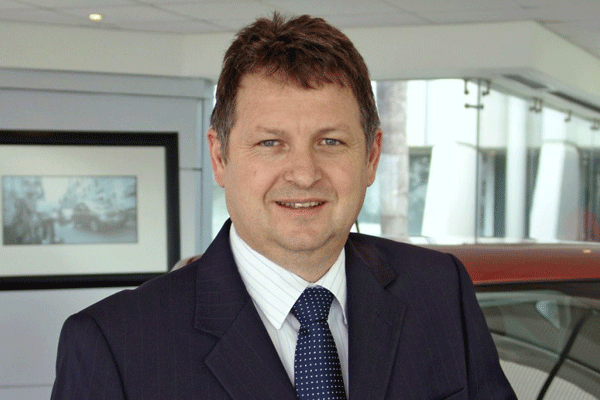
As a first-mover into automotive assembly in sub-Saharan Africa, Nissan joined a number of South Africa-based companies that are creating successful businesses on the continent. As managing director for Nissan Group of Africa, I give some insights on the company’s strategy from an automotive perspective.
By Mike Whitfield

Almost four years after Nissan ventured into auto assembly in Nigeria, it fills me with pride when I am asked to comment on our success as an auto company operating in Africa. Especially given that challenges often over-ride opportunities when considering the pros and cons of business expansion on the continent.
These are some of the pre-requisites I believe are important to long-term sustainability on the continent.
Building strong relationships
However much you are investing in a given country, it’s wise to remember you are always a guest.
Legislation, systems, processes and customs are different, so it’s important to build up layers of trust with government and industry stakeholders.
Get to know who’s who and what they’re responsible for. Never go in with an all-knowing approach. Listen, suggest, discuss but don’t preach.
- Chamisa under fire over US$120K donation
- Mavhunga puts DeMbare into Chibuku quarterfinals
- Pension funds bet on Cabora Bassa oilfields
- Councils defy govt fire tender directive
Keep Reading
As first movers in Nigeria, we were fortunate to be invited to give input into the new auto policy when it was first being developed as part of the government’s strategy to industrialise. This has positioned us as a strong player in Nigeria’s developing auto industry.
More recently, we’re also giving assistance and advice through our membership of the African Association of Auto Manufacturers (AAAM). The organisation — comprising South Africa auto makers — is playing a mentoring and knowledge-sharing role as countries consider car manufacture in their industrialisation policies. Together, we aim to develop a self-sustaining and internationally-competitive African auto industry.
Grooming a localised workforce
Governments want to know that your investment is going to benefit the local economy and its people. So it’s crucial to localise your operation as much as possible, as early as possible.
This means building an experienced workforce who understand their role in building your brand. Whether it’s at operational, sales or distribution level, skilled and knowledgeable employees — who can pass on their expertise to local counterparts — are a must.
An important development at our head office has been the recruitment of employees who represent us in our various markets, especially those where English is not the lingua franca — for example, French-speaking West and Central Africa, and Portuguese-speaking Lusophone Africa.
At our plant in West Africa, we’re building Proudly Nigerian vehicles for Nigerians by Nigerians. Initially, a strong ex-pat contingent was necessary in skills training but this is reducing as we train and upskill the workforce. We’re also hoping to attract skilled auto industry Nigerian ex-pats who want to return and play a role in building local skills and developing their country’s auto industry.
Knowing your markets
Knowing current and anticipating future market trends is vital to managing the financial health of the business, as well as preparing for growth and expansion.
Africa as we know, is a hotchpotch of markets: small and large; left- and right-hand drive; some economies and infrastructure more developed than others. So having an accurate gauge of volumes and product-types required in the various markets is wise from both a manufacturing and retail planning perspective.
There’s no point, for example, in having an over-supply of pickups — whether locally manufactured or imported — if demand has shifted to passenger vehicles.
Getting to really know and understand your markets — an on-going activity — is likely to be a combination of desktop studies, word-of-mouth experience, on-the-ground observation and strong local partners who can pass on their deep knowledge of customer behaviour.
Capitalising on logistical synergies
Distribution of vehicles and parts to over 40 countries in sub-Saharan Africa can be unwieldy and expensive. In Africa, a company working on its own doesn’t have sufficient volume or scale to create efficient solutions. So it’s cost-effective to make use of logistical synergies as much as possible.
This means optimising inward- and outward-bound land, air and sea routes for freight transport, either within the company or with external partners.
We’re able to combine volume with our Alliance partners Renault and Mitsubishi, to create scale and efficiency. But we make use of other innovative solutions, for example when we transport vehicles to Kenya, where we send about 400 vehicles a month.
In this instance, we’ve partnered with a Kenyan company which delivers flowers to South Africa by air. On the flight’s return trip, we load the plane with vehicles destined for East African markets. It’s a good example of how different industries can work together to share available regional airfreight cargo capacity and simultaneously reduce costs.
In the last three years, logistics synergies across sub-Saharan Africa have directly and indirectly saved our company about R200 million.
Staying the course
It’s worth repeating that doing business in Africa is a long-term commitment. There are no shortcuts. There is no certainty — financial or political. There are going to be ups and downs.
But those who are prepared to listen to the experience of others, to solicit advice when necessary, and who have the stamina to stay with the programme, will reap the rewards of success. Of that I am certain. —Economist
Mike Whitfield is the MD of Nissan Group of Africa, president of the National Association of Automobile Manufacturers of South Africa and deputy president of the AAAM.











